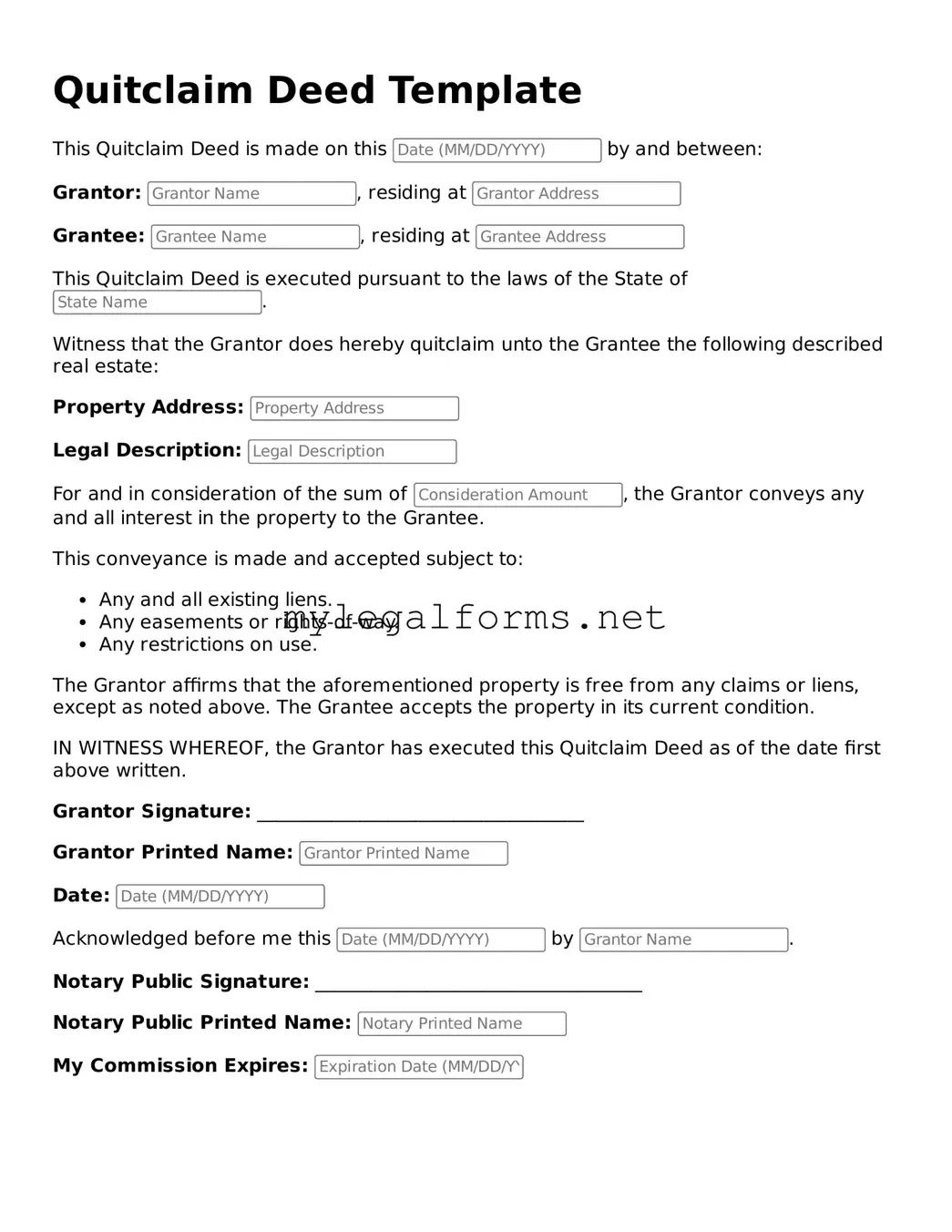Attorney-Approved Quitclaim Deed Form
A Quitclaim Deed is a legal document used to transfer ownership of real estate from one party to another without any warranties or guarantees about the property. This type of deed allows the grantor to relinquish any interest they may have in the property, making it a straightforward option for transferring property rights. Understanding the Quitclaim Deed is essential for anyone involved in property transactions, as it can affect future ownership and rights.
Launch Quitclaim Deed Editor
